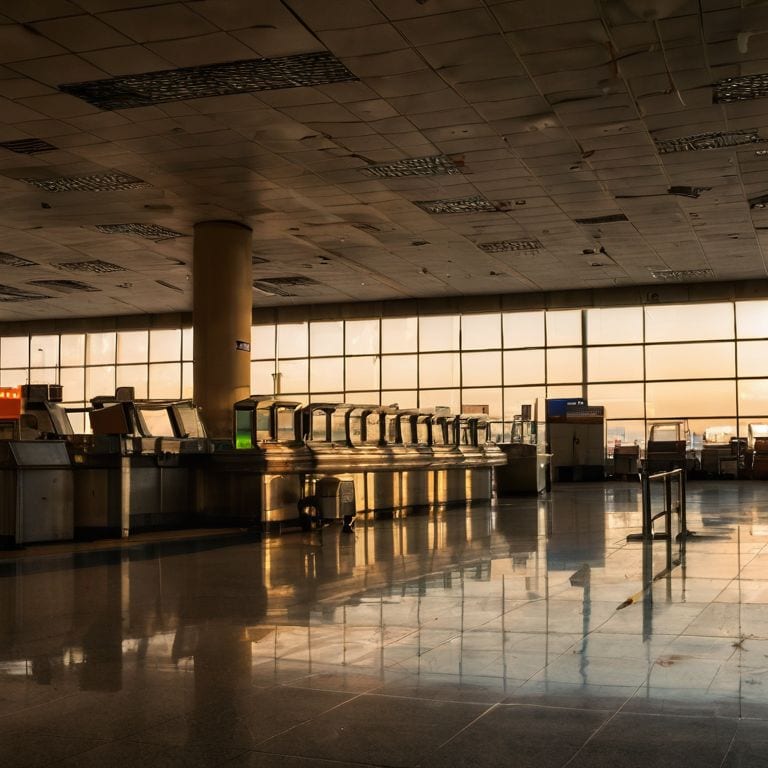I still recall the day I witnessed a major airline’s stock plummet, leaving investors scrambling to make sense of the chaos. It was a stark reminder that understanding airline bankruptcies requires more than just a surface-level analysis. The culprit behind such financial disasters often lies in a combination of poor fleet management, inadequate risk assessment, and a lack of long-term strategic planning. As someone who’s spent years analyzing the aviation industry, I’ve seen firsthand how a single misstep can snowball into a billion-dollar problem.
My goal is to provide you with a no-nonsense guide to navigating the complex world of airline finances, focusing on the key indicators that signal a carrier’s potential downfall. By cutting through the hype and jargon, I’ll share my expertise on how to identify the warning signs of impending bankruptcy, from fleet age and maintenance costs to on-time performance and fuel price volatility. Through a data-driven approach, we’ll explore the intricacies of airline operations and uncover the essential factors that distinguish a thriving carrier from one on the brink of collapse.
Table of Contents
Decoding Airline Insolvency

As I delve into the world of airline insolvency, I’m reminded of the complex interplay between financial metrics and operational performance. A key factor in predicting an airline’s financial health is its ability to navigate fluctuating fuel prices, which can have a significant impact on its bottom line. By analyzing historical data and market trends, I’ve developed a keen eye for spotting warning signs of airline insolvency, including declining revenue, increasing debt, and poor fleet management.
In my experience, airline restructuring strategies can be a double-edged sword. While they may provide a temporary lifeline, they can also lead to a prolonged period of uncertainty, ultimately affecting the airline’s ability to compete in the market. I’ve seen this play out in several historical airline bankruptcy cases, where the airline’s failure to adapt to changing market conditions and bankruptcy protection laws ultimately led to its demise.
By applying a data-driven approach to airline industry financial analysis, I’ve been able to identify key trends and patterns that can inform investment decisions. One crucial aspect is the impact of bankruptcies on airline employees, which can have far-reaching consequences for the industry as a whole. As an investor, it’s essential to consider these factors when evaluating the financial health of an airline, and I’ve developed a comprehensive framework to help navigate these complex issues.
Bankruptcy Protection Laws Explained
When an airline files for bankruptcy, it’s often a last resort to avoid complete collapse. Chapter 11 protection allows the airline to restructure its debt and continue operating, but it’s a complex process that requires careful navigation. I’ve seen several cases where airlines have successfully emerged from bankruptcy, only to face new challenges in the market.
The automatic stay provision is a crucial aspect of bankruptcy law, as it temporarily halts creditor claims and gives the airline breathing room to reorganize. This can be a lifeline for struggling airlines, but it’s not a guarantee of success – as I’ve tracked in my own research, many airlines have ultimately been unable to recover.
Warning Signs of Financial Turbulence
As I delve into the world of airline finances, I’ve come to realize that fleet age is a crucial indicator of a carrier’s financial health. A younger fleet generally translates to lower maintenance costs and improved fuel efficiency, which can be a significant factor in an airline’s ability to stay afloat.
I’ve spent countless hours poring over financial reports and on-time performance data, looking for warning signs of impending financial turbulence. By analyzing these metrics, I can often identify potential issues before they become major problems, allowing investors to make informed decisions and avoid potential pitfalls.
Understanding Airline Bankruptcies

As I delve into the world of airline insolvency, I’m reminded of the airline industry financial analysis that I’ve conducted over the years. It’s a complex web of factors that can lead to bankruptcy, and understanding these warning signs is crucial for investors and enthusiasts alike. I’ve seen it time and time again: a struggling airline attempts to restructure its debt, only to find itself in a deeper financial hole.
One of the key areas I focus on is historical airline bankruptcy cases. By examining the past, we can gain valuable insights into the present and future of the industry. For instance, the bankruptcies of major airlines in the early 2000s were largely attributed to soaring fuel costs and increased competition. Today, we’re seeing similar trends, with airlines struggling to maintain profitability in the face of rising fuel prices and shifting market demands.
The impact of bankruptcies on airline employees cannot be overstated. When an airline goes under, it’s not just the shareholders who feel the pain – thousands of workers are left without jobs, and the ripple effects are felt throughout the entire industry. As someone who’s attended countless shareholder meetings, I’ve seen firsthand the human side of airline insolvency, and it’s a sobering reminder of the high stakes involved in this business.
Historical Cases of Airline Financial Failure
As I delve into the world of airline bankruptcies, I’m reminded of the numerous cases that have shaped the industry. One notable example is the demise of Pan American World Airways, which filed for bankruptcy in 1991. The financial struggles of this iconic airline can be attributed to a combination of factors, including increased competition and rising fuel costs.
A closer look at the history of airline bankruptcies reveals a pattern of poor financial management, which ultimately led to the downfall of several major carriers. For instance, the bankruptcy of Eastern Air Lines in 1991 was largely due to its inability to adapt to changing market conditions and manage its debt effectively.
Restructuring Strategies for Survival
When an airline faces financial distress, its ability to restructure debt becomes crucial for survival. This can involve negotiating with creditors, reducing operational costs, and exploring new revenue streams. By taking a proactive approach to debt restructuring, airlines can avoid the stigma of bankruptcy and maintain a level of control over their financial destiny.
Effective restructuring also requires a deep understanding of the airline’s operational inefficiencies and areas where costs can be cut without compromising safety or service. Streamlining operations is often a key component of this process, enabling airlines to emerge from financial turmoil leaner and more competitive, with a renewed focus on long-term sustainability.
Navigating Airline Insolvency: 5 Key Takeaways
- Monitor Fleet Age and Maintenance Costs: A carrier’s fleet age and maintenance expenses can be indicative of its financial health, as older aircraft often require more frequent and costly repairs
- Analyze On-Time Performance Data: Consistent delays can erode customer trust, leading to decreased revenue and increased operational costs, ultimately contributing to financial instability
- Track Global Fuel Price Trends: As fuel costs account for a significant portion of an airline’s expenses, understanding market fluctuations is crucial for predicting an airline’s financial performance
- Recognize the Role of Bankruptcy Protection Laws: Familiarity with bankruptcy laws and regulations can help investors anticipate and prepare for potential airline insolvencies, mitigating financial losses
- Study Historical Cases of Airline Restructuring: Examining past instances of airline bankruptcies and restructurings can provide valuable insights into successful strategies for navigating financial turmoil and emerging stronger
Key Takeaways for Investors
I’ve identified that an airline’s fleet age and on-time performance data can be strong indicators of its financial health, making them crucial metrics for investors to track
Understanding the complexities of bankruptcy protection laws and their implications on airline restructuring is vital for predicting the outcome of financially troubled airlines
A historical analysis of airline bankruptcies reveals patterns in fuel price volatility, market competition, and debt management, which can inform smarter investment decisions in the aviation sector
Insight into Airline Insolvency
When an airline’s wings are clipped by bankruptcy, it’s not just a failure of the business – it’s a failure of foresight, a lack of strategic navigation through the turbulent skies of global economics and shifting consumer demand.
Edward Finch
Navigating the Skies of Insolvency

As we’ve explored the complex world of airline bankruptcies, it’s clear that understanding the warning signs of financial turbulence is crucial for investors and enthusiasts alike. By decoding the intricacies of airline insolvency, including _restructuring strategies_ and the role of bankruptcy protection laws, we can better navigate the challenges facing this industry. From historical cases of financial failure to the latest trends in fleet management and fuel price fluctuations, the key to success lies in data-driven decision making.
As we look to the future of aviation, it’s essential to remember that even in the face of insolvency, there are _opportunities for growth_ and innovation. By embracing a forward-thinking approach and staying attuned to the ever-changing landscape of the airline industry, we can unlock new possibilities and create a more resilient, sustainable future for air travel. Whether you’re a seasoned investor or an avid enthusiast, the world of aviation is full of excitement and promise – and with the right insights, you can soar to new heights.
Frequently Asked Questions
What role do global fuel prices play in an airline's likelihood of bankruptcy?
Global fuel prices are a crucial factor in an airline’s financial health. I track them closely in my spreadsheet, and historically, a 20% spike in fuel costs can erase an airline’s profitability. Airlines with older fleets are particularly vulnerable, as they’re less fuel-efficient. It’s a key metric I consider when assessing bankruptcy risk.
Can an airline's fleet age and maintenance costs be used as reliable indicators of its financial health?
In my experience, an airline’s fleet age and maintenance costs can indeed serve as key indicators of its financial health. I track these metrics closely, as older fleets often correlate with higher maintenance expenses, which can erode profit margins and signal potential financial strain.
How do government regulations and bankruptcy protection laws differ across countries, and what impact do these differences have on an airline's restructuring options?
I’ve tracked these differences in my global aviation database, and it’s striking to see how varying bankruptcy laws can make or break an airline’s restructuring efforts. For instance, Chapter 11 in the US offers more flexibility than Japan’s Civil Rehabilitation Law, which can significantly impact an airline’s ability to renegotiate debt and leases.



